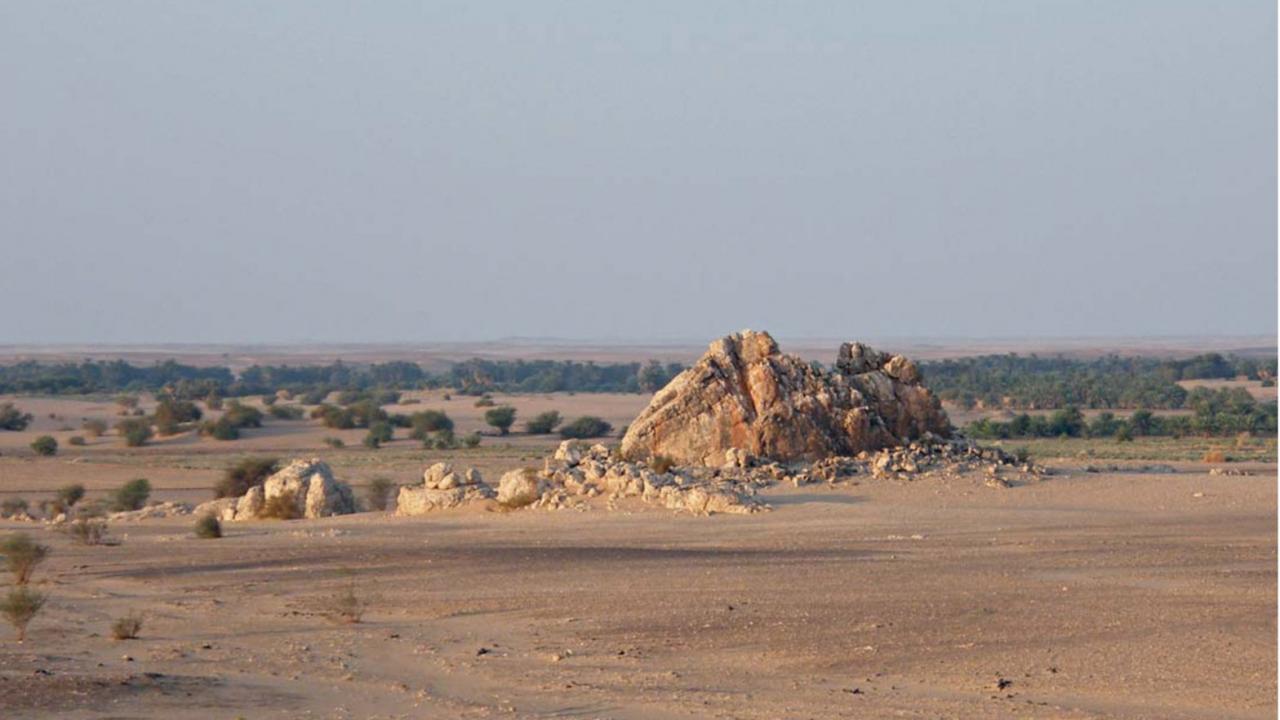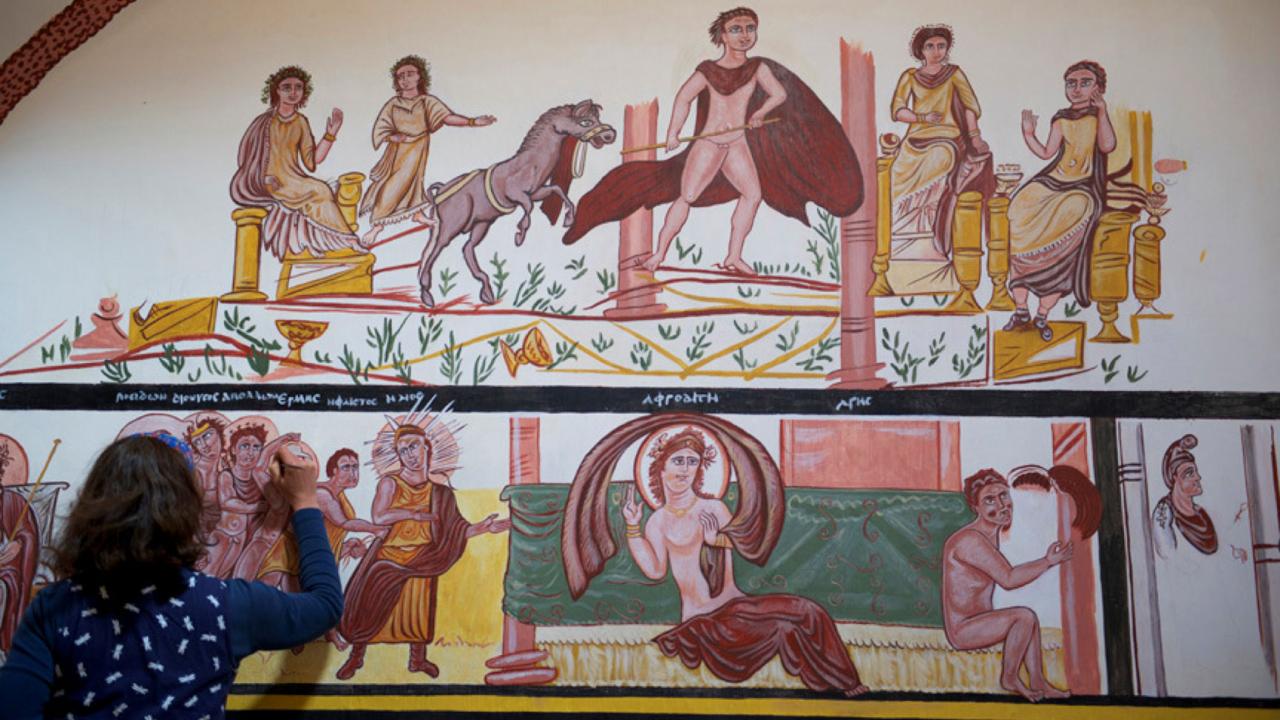The Tomb Chapel of Menna Tt 69 the Art Culture and Science of Painting in an Egyptian Tomb
The Tomb Chapel of Menna (TT 69) The Art, Culture, and Science of Painting in an Egyptian Tomb

The Tomb Chapel of Menna (TT 69): The Art, Culture, and Science of Painting in an Egyptian Tomb. Edited by Melinda Hartwig. Cairo: The American University in Cairo Printing, 2013.
Project description
The conservation and documentation of the tomb chapel of Menna (TT 69) at Luxor was implemented between 2007 and 2009, under the direction of Melinda Hartwig of Georgia State Academy, with the support of USAID and the American Research Center in Arab republic of egypt (ARCE). The results of this project were published in a lavishly decorated book, The Tomb Chapel of Menna (TT 69): The Art, Culture, and Science of Painting in an Egyptian Tomb (edited by Melinda Hartwig, and published by The American University in Cairo Printing, in 2013).
Decorative program
The eighteenth dynasty tomb of Menna is one of the about beautiful and complex painted tombs of the Theban necropolis of the Nobles at Luxor.
The tomb, cut into the rock of the upper ridges of Sheikh Abd Al-Qurna, "is situated in a slightly sunken, enclosed forecourt. The program of the tomb chapel is in the form of an inverted 'T' composed of a broad transverse hall and a long inner hall with a shrine at the end." (see page nine for more information)
"The architecture of the tomb was organized specifically for the eternal life of the tomb owner. The upper level or superstructure of the tomb related to the solar cult and the worship of the sun. The centre level was the place in which the tomb possessor's cult was celebrated, and it remained accessible to the living. This included the forecourt, where the relatives of the deceased gathered to honor the dead during necropolis festivals; and the tomb chapel, that acted every bit a type of festival hall. The lower level, or burial, was closed after the funeral ceremonies, and related to the Osirian realm and the containment of the body. The decoration of the private tomb complex conformed to this tripartite division with solar themes in the upper level, scenes focusing on the life, cult and afterlife of the tomb owner in the chapel or middle level, and images of the future in the burying sleeping accommodation (if decorated)." (see folio 21 for more data)
"The decorative program in the tomb chapel of Menna is almost perfectly preserved, which allows for a nuanced reading of its images and texts. The decorative focus was on Menna and his family unit, their identity, and their well-being in this and the next globe. Menna's decorative program likewise included specific gods and goddesses from whom he sought favor or protection, and whose presence reflected the religious atmosphere of the fourth dimension." (see page 22 for more data)
Documentation method
Digital Line Drawings
"The digital cartoon specialist for the project, Pieter Collet, took the stitched photographs and traced them as vector drawings direct on the interactive screen of a Wacom Cintiq® 21UX in Adobe Illustrator®. For the drawings, he followed the thickness of the painted line, and fixed it to a color primal of black, grayness, greenish, and bluish. Blackness fills of differing thickness followed the size of the outlines of the paintings, contained of their original colors. Black was also used for internal details, and areas in which black paint was used extensively. Where preliminary drawings were visible, black brushstroke-fill was used also. In the case of colored areas that were not outlined, a consequent weight for a black line was applied. A mid-gray was applied in those cases where the brushstrokes were so shut to each other that, upon reduction, they would meld together. A lighter gray was used for the grids and sketch lines, where visible. A dark-grey make full indicates the graffiti painted over one of the filled grain baskets on the agricultural wall. Dark-green was utilized to reconstruct what was once visible in before photographs (Mond, Burton, Schott, etc.). Blue was employed for earlier underdrawings and paintings that are, today, visible to the eye." (see page 130 for more data)
Visual example(southward)

Figure 2.6a Osiris wall with (ane) Menna and Henuttawy followed by two attendants adoring Osiris, the god of the underworld, seated in a kiosk; and (two) sub-scene of offering bearers and men lighting two large braziers. Broad Hall Pocket-size Left (BHSL) (Photo).

Effigy 2.6b Osiris wall with (one) Menna and Henuttawy followed past two attendants doting Osiris, the god of the underworld, seated in a kiosk; and (2) sub-scene of offering bearers and men lighting two large braziers. Wide Hall Pocket-sized Left (BHSL) (Cartoon).

Figure 2.10a Fake-door stela with a cavetto cornice and offering text. The inside stela: (1) with Anubis earlier Osiris and the western goddess (upper left), and Re-Horakhty with Hathor on the right; (ii) middle register with ii representations of Menna and Henuttawy; and (3) lower register with 2 sets of figures including Menna and his married woman, followed past priests adoring earlier an offer table. At the sides of the false-door stela, figures of Menna and Henuttawy adore on two registers. Broad Hall Pocket-size Right (BHSR) (Photo).

Figure two.10b False-door stela with a cavetto cornice and offering text. The within stela: (i) with Anubis before Osiris and the western goddess (upper left), and Re-Horakhty with Hathor on the correct; (two) eye register with two representations of Menna and Henuttawy; and (3) lower register with two sets of figures including Menna and his married woman, followed by priests adoring before an offering table. At the sides of the imitation-door stela, figures of Menna and Henuttawy adore on ii registers. Broad Hall Small Right (BHSR) (Drawing).

Figure 2.8b: Valley Festival wall (Drawing particular).
What nosotros like
- The drawing technique (vectorized lines occasionally enhanced past a solid black fill), practical for representing the outlines of decorative elements, succeeds in capturing the distinct brushwork of the original.
- Although color representation is omitted from the outline drawings, certain elements such as impairment outlines, internal details, preliminary sketches, grids, graffiti etc. are differentiated past the systematic utilize of greyscale hues.
- The widespread utilization of black make full concerning elements other than painted outlines (wigs, hieroglyphs etc.) creates a stark contrast with the rest of the visual representation.
- The merely bright hues that appear on the drawings are dark-green and blueish which are intended to differentiate between reconstructions based on archival photographs and earlier underdrawings respectively (come across Figure 2.8b).
- As not to be too obtrusive while keeping the focus on the decorative elements, merely larger damaged areas are indicated. Furthermore, wherever represented on the drawings, their outlines are rendered by a subtle low-cal grayness hue.
Addititonal reading
You lot can purchase "The Tomb Chapel of Menna (TT 69): The Art, Culture, and Science of Painting in an Egyptian Tomb" direct from the publisher through the website of The American University in Cairo Press (LE 600).
It is also available via numerous retailers, American readers can society the book through Amazon.com ($58.83), while readers from the One-time Continent tin buy it at Amazon Germany (EUR 99), Amazon French republic (EUR 93.78) and Amazon UK (from £35.78).
Précis and commentary past Júlia Schmied

Reading
Nubia in the New Kingdom: The Egyptians at Kurgus
Précis and commentary past Júlia Schmied
The articulation Sudan Archaeological Research Society-British Museum project between 1998 and 2012 investigated the many records left past the Egyptian military expeditions during the New Kingdom at Kurgus.

Reading
Reconstructing the Villa of Serenus at Amheida
Précis and commentary by Júlia Schmied
In 1979, a team of the Dakhleh Oasis Project discovered the upper role of lavishly decorated walls of what turned out to exist a fourth century 'villa' occupied by a family unit of high social status.
Source: https://www.digital-epigraphy.com/reading/the-tomb-chapel-of-menna-tt-69-the-art-culture-and-science-of-painting-in-an-egyptian-tomb
0 Response to "The Tomb Chapel of Menna Tt 69 the Art Culture and Science of Painting in an Egyptian Tomb"
Post a Comment